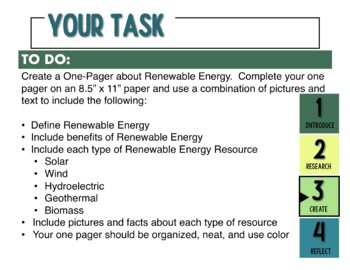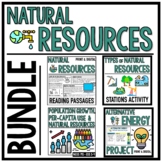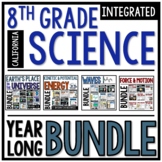Alternative Energy Renewable Resources Project
Sarah's STEM stuff
3k Followers
Grade Levels
6th - 8th
Subjects
Resource Type
Standards
NGSSMS-ESS3-3
Formats Included
- PDF
Pages
15 pages
Sarah's STEM stuff
3k Followers
What educators are saying
I used elements from this resource to create a end of unit project for our Amplify energy unit. The students were excited to complete research and create a presentation instead of just taking another boring end-of-unit test. Thank you so much for creating this great resource!
Also included in
- This bundle focuses on natural resources and how their use affects Earth. Students start by learning the difference between nonrenewable and renewable resources and examples of each. Then students model the mining process by mining for chocolate chips and seeing how extracting resources affects thPrice $15.20Original Price $19.00Save $3.80
- Teaching is hard! Make things easier with this bundle that has everything you need for the full year. This year long bundle includes everything you need to teach a middle school level course that meets the NGSS 8th Grade integrated standards for California. This bundle contains a variety of engagiPrice $185.00Original Price $252.50Save $67.50
Description
In this activity, students go through 4 different steps to learn about different types of renewable energy resources.
- In part 1, the introduction, students analyze a pie chart showing the breakdown of energy source in the United States to see where the country gets its energy.
- In part 2, students research different types of nonrenewable and renewable energy sources and list the advantages and disadvantages of each one. The activity includes readings for fossil fuels and nuclear energy and links to the different types of renewable energy sources.
- In part 3, students apply their research to make a one pager using text and graphics about renewable energy resources.
- In part 4, students reflect on their learning with an exit ticket (digital or printed)
This activity is self directed and great for a sub. The resource includes a digital google slides to guide students through the activity that includes links and readings. The worksheet the students fill out can either be printed and used digitally.
Total Pages
15 pages
Answer Key
Included
Teaching Duration
1 Week
Report this resource to TPT
Reported resources will be reviewed by our team. Report this resource to let us know if this resource violates TPT’s content guidelines.
Standards
to see state-specific standards (only available in the US).
NGSSMS-ESS3-3
Apply scientific principles to design a method for monitoring and minimizing a human impact on the environment. Examples of the design process include examining human environmental impacts, assessing the kinds of solutions that are feasible, and designing and evaluating solutions that could reduce that impact. Examples of human impacts can include water usage (such as the withdrawal of water from streams and aquifers or the construction of dams and levees), land usage (such as urban development, agriculture, or the removal of wetlands), and pollution (such as of the air, water, or land).







